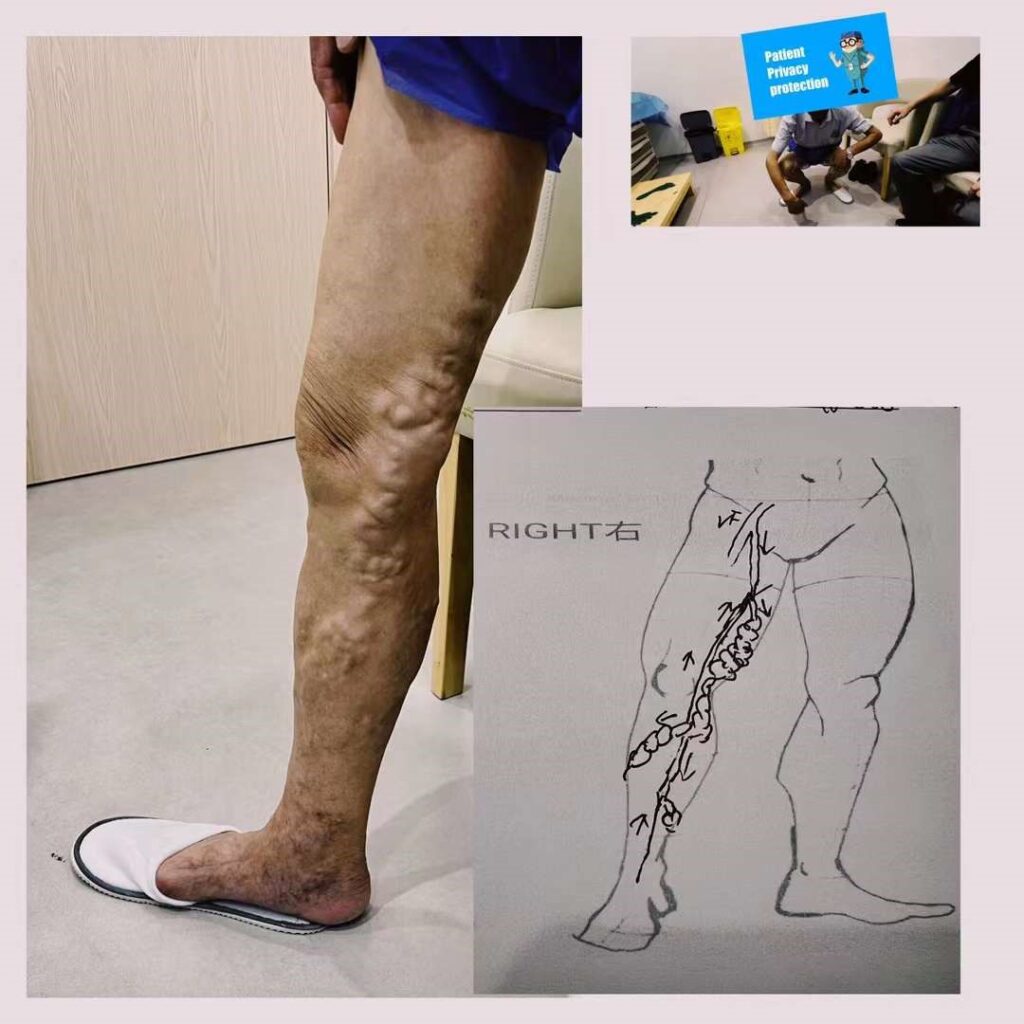Abstract:
Venous varicose veins represent a common vascular condition, with increased prevalence among the elderly population. In this report, we present the case of a 91-year-old Chinese who, due to advanced age and resistance to surgical intervention, had been struggling with venous varicosities for over four decades. Upon a local physician’s recommendation, the patient sought treatment from the esteemed Dr. Zhang Qiang’s medical team, renowned for their expertise in venous disease, at the Dr.Smile Vein Center. Using an innovative treatment approach known as CHIVA (Conservative Hemodynamic and Anatomic Varicose Vein Treatment), the patient’s varicose veins were successfully addressed with a minimally invasive procedure under local anesthesia. Postoperatively, the patient walked out of the surgical suite with a brisk gait, free from the risks of edema, hematoma, or nerve damage. This case underscores the safety and minimally invasive nature of CHIVA, especially in the context of elderly venous varicose vein patients, offering a viable alternative to break the vicious cycle of conventional surgeries.
Keywords: Venous varicose veins, elderly patients, CHIVA treatment, minimally invasive surgery, hemodynamic assessment
Introduction
Venous varicose veins are a prevalent vascular disorder that often develops when veins lose elasticity, leading to blood reflux. Elderly patients, due to physiological and psychological factors, frequently resist conventional surgical treatments, necessitating safer and less invasive therapeutic approaches. CHIVA treatment, by identifying the sources of venous hypertension through hemodynamic assessment, enables the alleviation of venous hypertension without altering external appearance, making it particularly suitable for elderly patients with venous varicose veins.
Case Description
The patient in this case report is a 91-year-old Chinese individual who, due to advanced age and resistance to traditional surgical treatment, had been struggling with venous varicose veins for over four decades. The patient’s right leg was covered with twisted, dilated veins, and varicosities had appeared on the thigh. Pigmentation and stasis dermatitis were present in the ankle area.

CHIVA Treatment The patient sought treatment from Dr. Zhang Qiang’s esteemed medical team, renowned for their expertise in venous disease, at the Shanghai Venous Center. Through hemodynamic assessment, it was discovered that the patient’s great saphenous vein (N2) had severe reflux, and the source of N3 reflux was found in the upper thigh. These two reflux sources (EP) resulted in severe venous dilation and distortion. CHIVA treatment, requiring only two small incisions under local anesthesia, successfully blocked these reflux sources, alleviating venous hypertension.

Treatment Outcome
Postoperatively, the patient walked out of the surgical suite with a brisk gait, and notably, no risks of edema, hematoma, or nerve damage were observed. The minimally invasive nature of CHIVA allowed the patient to recover more rapidly. This treatment approach does not target outwardly prominent veins but rather focuses on alleviating venous hypertension, making the procedure safe and minimally invasive.
Conclusion
Elderly venous varicose vein patients often delay seeking treatment due to concerns about complications associated with traditional surgeries, leading to severe venous varicose vein conditions. CHIVA treatment, by addressing the sources of venous hypertension through hemodynamic assessment, offers a safe and minimally invasive option. This innovative approach provides an effective treatment choice for elderly patients with venous varicose veins, with the potential to break the vicious cycle of conventional surgeries, making age no longer a barrier to effective intervention.